Hutian Kiln Site: A Hidden Gem for Ceramic Enthusiasts and History Buffs
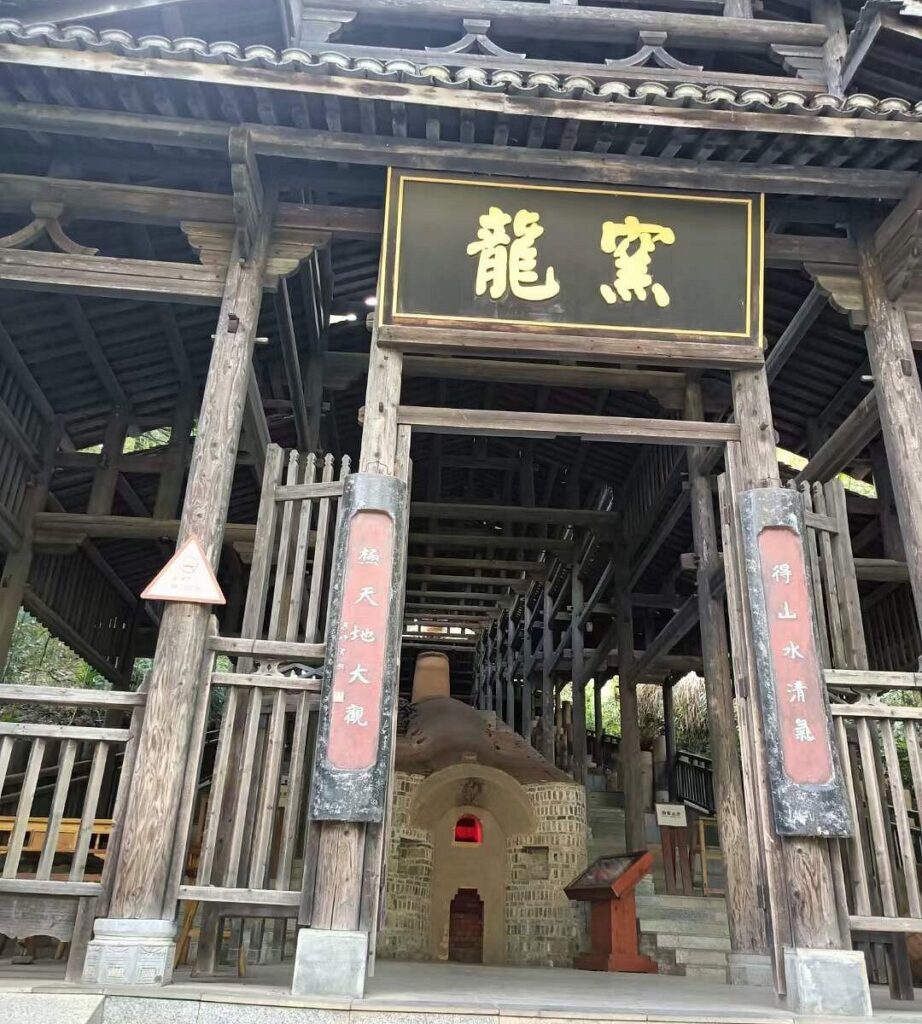
An Essential Guide to Visiting Hutian Kiln Site
In This Guide
- An Essential Guide to Visiting Hutian Kiln Site
- The Rich History and Legends of Hutian Kiln Site
- Main Highlights: What You Absolutely Can’t Miss
- Planning Your Visit: A Practical Guide
- Tickets: Prices, Booking, and Tips
- How to Get There: A Complete Transportation Guide
- Local Cuisine and Accommodation Nearby
- Frequently Asked Questions
- Final Thoughts on Your Trip
Nestled in the heart of Jiangxi Province, just 4 kilometers southeast of Jingdezhen, lies a treasure trove of Chinese history and artistry—the Hutian Kiln Site. Recognized as the largest and most significant ancient porcelain production site from the Song and Yuan Dynasties, this archaeological marvel invites visitors to step back in time to witness the legacy of porcelain craftsmanship that has defined Jingdezhen as the “Porcelain Capital” of China.
A Journey Through Time
As you wander through the remnants of the Hutian Kiln Site, you’ll encounter a well-preserved glimpse into the world of ancient artisans. The site spans an impressive 260,000 square meters, showcasing a wealth of kiln structures and the remnants of the porcelain-making process that flourished for over 700 years. The atmosphere here is imbued with the echoes of history, where skilled hands once molded clay into exquisite works of art that would grace tables across China and beyond.
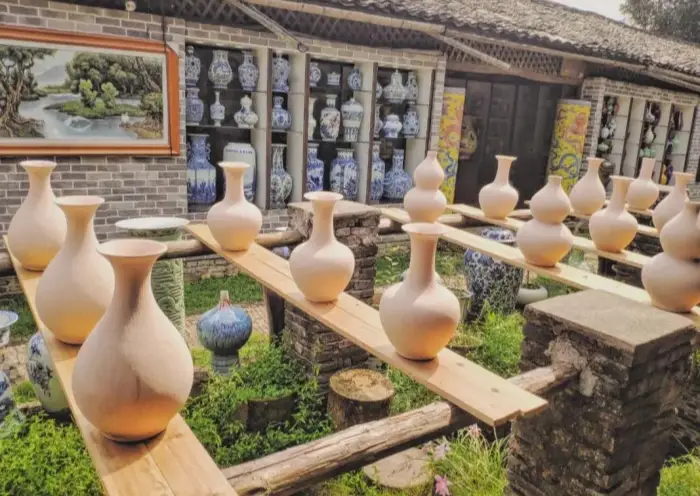
Hutian Kiln Site.
What Awaits You
Your visit promises to be more than just a stroll through ruins. The Hutian Ancient Kiln Site Exhibition Hall serves as the centerpiece, displaying a fascinating collection of artifacts unearthed from the site. Here, you can marvel at intricate porcelain pieces, learn about the kiln’s historical significance, and observe models that illustrate the ancient production methods of the Song, Yuan, and Ming Dynasties. The experience is enriched by knowledgeable guides who can provide insights into the cultural and technical aspects of porcelain making.
Planning Your Visit
Open daily from 9:00 AM to 5:00 PM, the Hutian Kiln Site welcomes visitors with an admission fee of just 40 RMB. A visit typically lasts between 1 to 2 hours, making it an ideal addition to your itinerary while exploring the vibrant city of Jingdezhen. Whether you’re a history buff, an art enthusiast, or simply curious about Chinese culture, the Hutian Kiln Site offers a unique opportunity to connect with the rich traditions of porcelain craftsmanship.
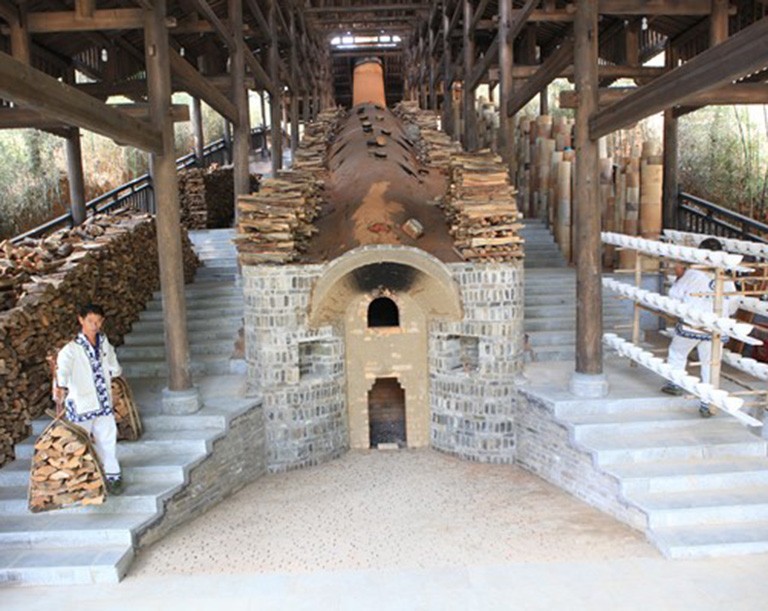
Hutian Kiln Site.
As you prepare for your journey, remember that the Hutian Kiln Site is not merely a destination; it is a portal into the artistry and heritage of a civilization that has revered porcelain for centuries. Embrace this chance to explore not just the site but the stories woven into every piece of porcelain, every brick of the kiln, and every moment spent in this historical enclave.
The Rich History and Legends of Hutian Kiln Site
Nestled in the rural charm of Hutian Village, just a short drive from the bustling city of Jingdezhen, lies a treasure trove of history and cultural significance—the Hutian Kiln Site. This ancient porcelain production site is not only a testament to the artistry and craftsmanship of ancient China but also a vibrant part of local lore that has been passed down through generations.
A Legacy of Porcelain Mastery
The Hutian Kiln Site, a key archaeological site, dates back to the Five Dynasties and flourished during the Song and Yuan Dynasties (960-1368 AD). It is renowned for its exquisite porcelain, which played a critical role in establishing Jingdezhen as the “Porcelain Capital” of China. The kilns here were responsible for producing high-quality ceramics that were sought after both domestically and internationally. The site’s significance is underscored by its designation as a National Relic Protection Unit in 1982, preserving its rich heritage for future generations.

Hutian Kiln Site.
The Craftsmanship Behind the Kilns
Visitors to the Hutian Kiln Site can explore the intricacies of ancient porcelain-making techniques. The site features an exhibition hall displaying a variety of unearthed porcelain artifacts that offer a glimpse into the artistry of the era. From delicate porcelain vases to intricate dinnerware, these pieces reflect the technological advancements and aesthetic sensibilities of the time.
The kilns themselves are remarkably preserved, showcasing the layout and structure that defined porcelain production during the Song, Yuan, and Ming Dynasties. As you walk through the site, the remnants of kiln furniture and debris tell the stories of artisans who dedicated their lives to perfecting this age-old craft.
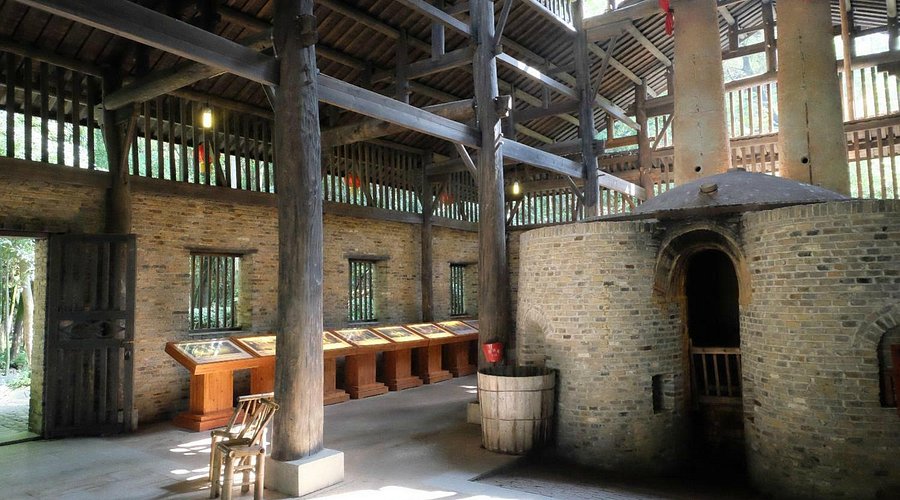
Hutian Kiln Site.
Legends and Cultural Significance
The Hutian Kiln Site is steeped in legends that enhance its allure. One popular tale speaks of a master potter who, after years of striving for perfection, uncovered a rare clay that produced the most radiant blue glaze. It is said that this discovery transformed Jingdezhen into a hub for porcelain trade, attracting merchants from far and wide. This legendary potter is often revered as the guardian spirit of Hutian, his legacy embodied in the artistry of local ceramicists today.
Another legend involves the practice of “throwing clay,” where potters would toss clay into the air as a rite of good fortune before beginning their work. This whimsical ritual symbolizes the blend of skill and spirituality inherent in the craft, a reminder that porcelain-making is not just a trade but an art form deeply connected to the soul of the region.
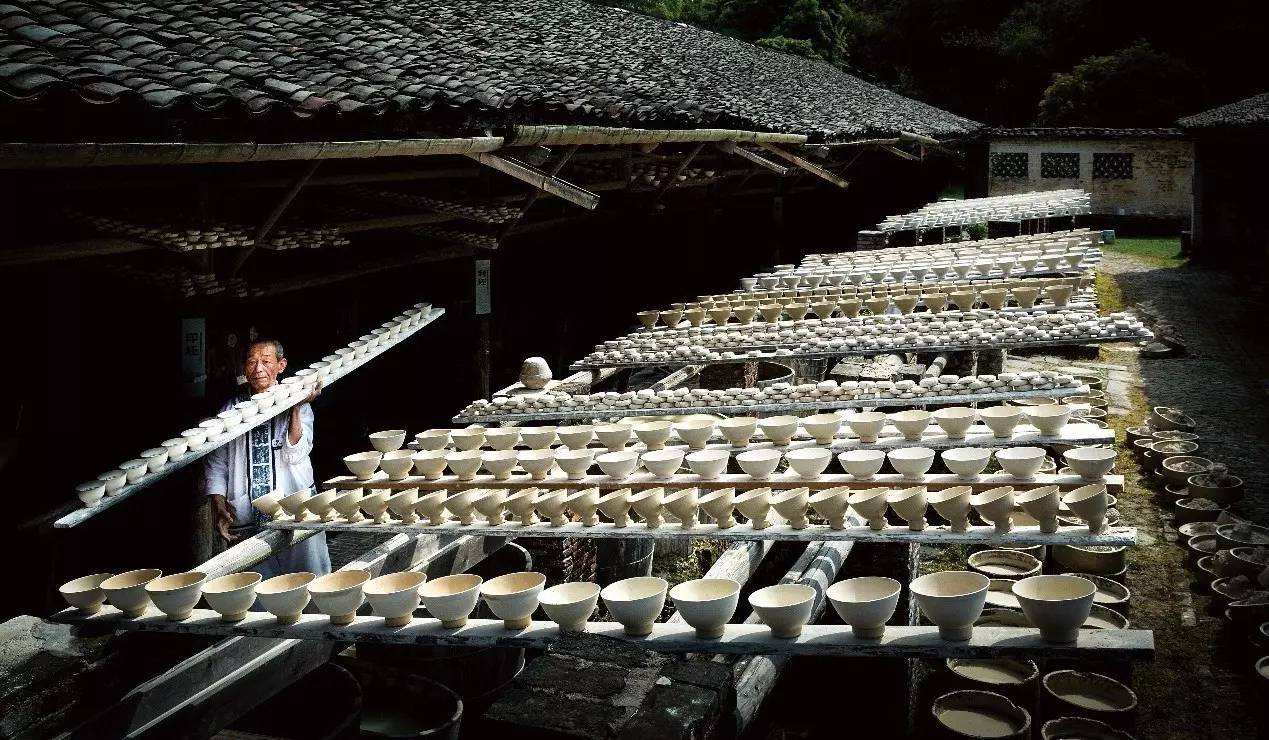
Hutian Kiln Site.
Visiting the Hutian Kiln Site
For those eager to delve into this rich tapestry of history, the Hutian Kiln Site is open from 9:00 AM to 5:00 PM, with an admission fee of 40 RMB. A visit typically lasts 1-2 hours, allowing ample time to absorb the stories and craftsmanship that define this cultural gem. Whether you are a history enthusiast, a pottery lover, or simply curious about Chinese culture, the Hutian Kiln Site offers a unique opportunity to connect with China’s illustrious past.
As you explore the ancient kilns and vibrant legends, you’ll leave with a deeper appreciation for the artistry and cultural heritage that continues to thrive in Jingdezhen today.
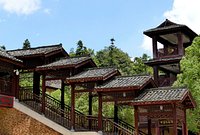
Hutian Kiln Site.
Main Highlights: What You Absolutely Can’t Miss
When journeying through the rich tapestry of Chinese history, no visit to Jingdezhen is complete without exploring the Hutian Kiln Site. This ancient porcelain production hub, thriving from the Song to the Ming Dynasties, offers a fascinating glimpse into the artistry and craftsmanship that has defined Chinese ceramics for centuries. Here are the main highlights that you absolutely cannot miss:
1. The Exhibition Hall
Upon entering the Hutian Kiln Site, the Exhibition Hall greets you with an array of exquisite porcelain artifacts unearthed from the site. This hall not only showcases the delicate artistry of ancient ceramic pieces but also provides context about their historical significance. The displays include:
- Ceramic Artifacts: Marvel at beautifully crafted porcelain from various dynasties, particularly from the Song (960–1279) and Yuan (1271–1368) periods.
- Distribution Models: Learn about the layout and organization of the kiln site through detailed models that illustrate the historical production processes.
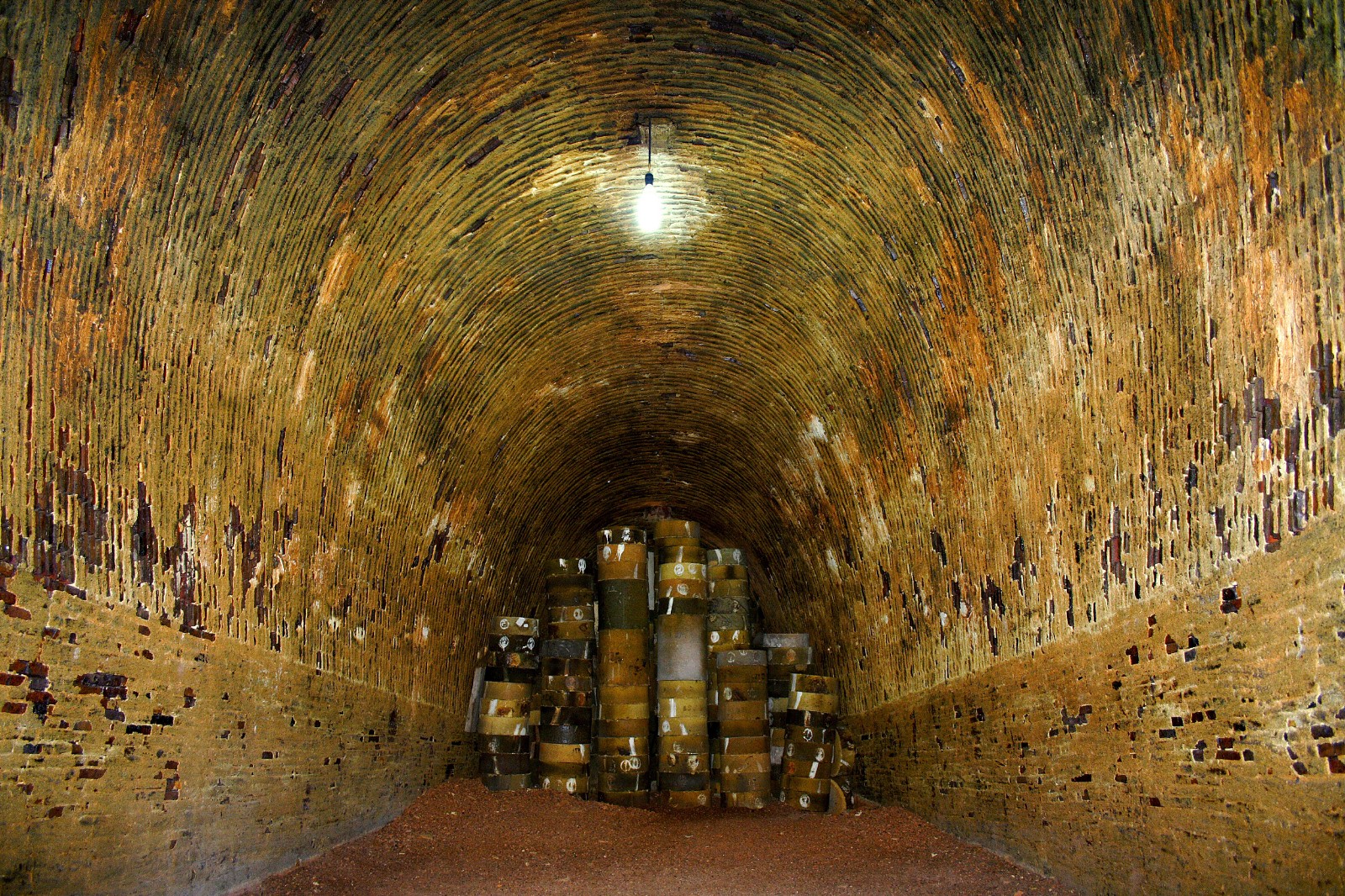
Hutian Kiln Site.
2. Ancient Kiln Ruins
Explore the kiln ruins, where remnants of ancient kilns have been meticulously preserved over 260,000 square meters. The sight of kiln furniture and debris piled into hills is both awe-inspiring and educational. Here, you can witness:
- Preserved Structures: The remains of kilns that once fired thousands of porcelain pieces, showcasing the evolution of kiln technology.
- Layers of History: Examine the accumulation layers, which reveal the depth of porcelain production that spanned several dynasties.
3. Insights into Traditional Crafting Techniques
Interact with knowledgeable guides or participate in demonstrations to understand the traditional porcelain-making process. This includes:
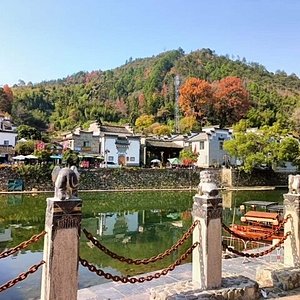
Hutian Kiln Site.
- Live Demonstrations: Depending on your visit timing, you may have the chance to watch artisans demonstrate ancient techniques that have been handed down through generations.
- Workshops: Engage in pottery-making experiences that allow you to create your own piece of porcelain, giving you a firsthand feel of the craft.
4. Historical Context and Significance
The Hutian Kiln Site is not just a collection of artifacts; it is a vital piece of the puzzle that explains Jingdezhen’s status as the “Porcelain Capital.” Here, you can delve into:
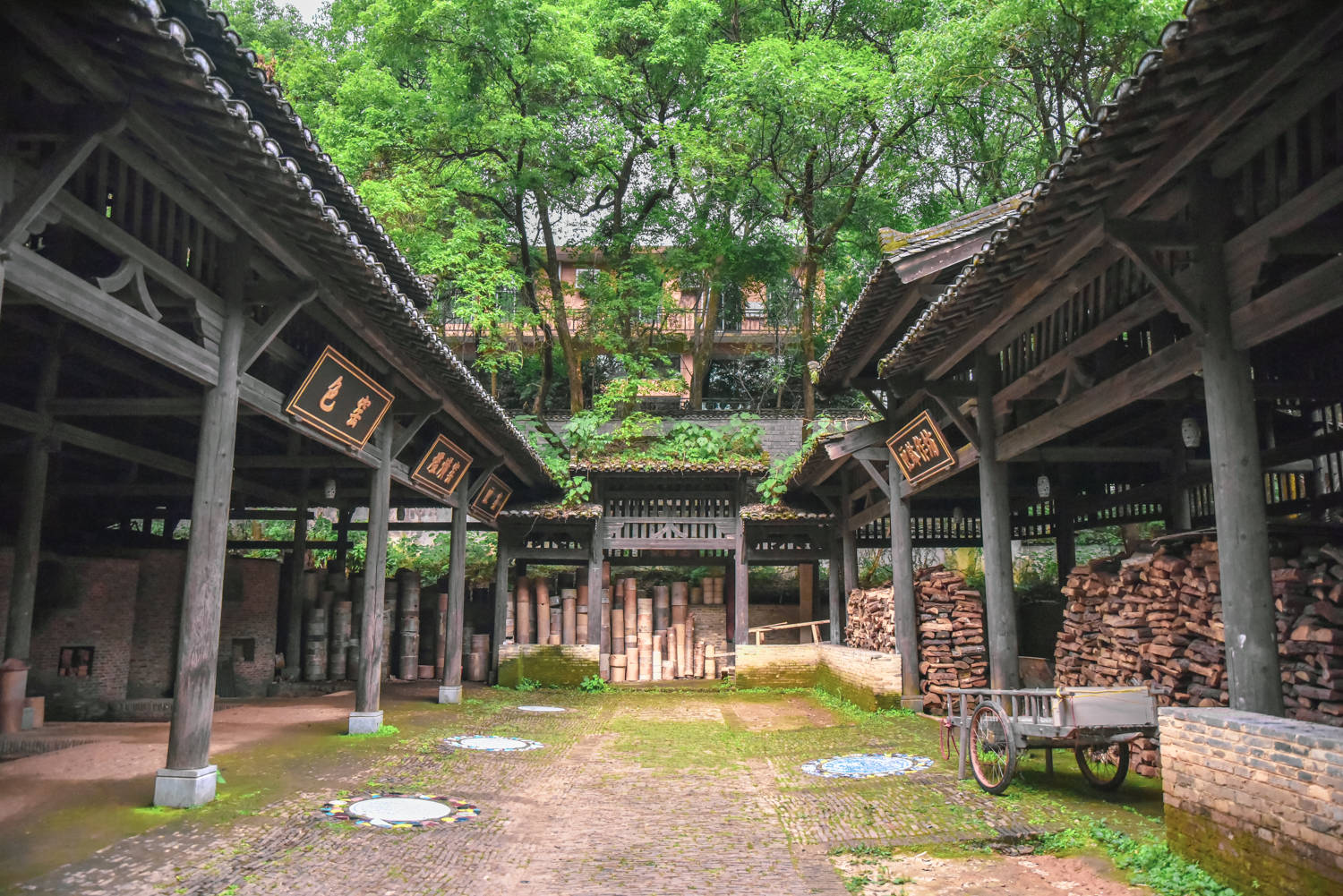
Hutian Kiln Site.
- Cultural Impact: Understand how the kiln site played a pivotal role in the global spread of Chinese porcelain, influencing art and trade across continents.
- Historical Timeline: Learn how the kiln thrived during the Song and Yuan Dynasties, experienced a decline in the Ming Dynasty, and left a lasting legacy of craftsmanship.
5. Surrounding Attractions
Enhance your experience by visiting nearby sites that complement your journey through porcelain history:
- Yaoli Ancient Town: A charming town that reflects the architectural style of ancient China and offers a glimpse into local life.
- Fuliang Ancient City: Explore the well-preserved structures and streets that tell stories of the past.
- Jingdezhen Museum of Porcelain: Further immerse yourself in the world of ceramics with extensive collections and exhibits.

Hutian Kiln Site.
Practical Information
- Opening Hours: Daily from 9:00 AM to 5:00 PM.
- Admission Fee: 40 RMB (approximately $6), which provides access to all exhibition areas.
- Recommended Visit Duration: 1-2 hours, allowing ample time to explore and engage with the exhibits.
Visiting the Hutian Kiln Site not only enriches your understanding of Chinese porcelain but also transports you back in time to an era where craftsmanship was revered. A trip here is a must for anyone passionate about history, culture, and, of course, the exquisite art of pottery.
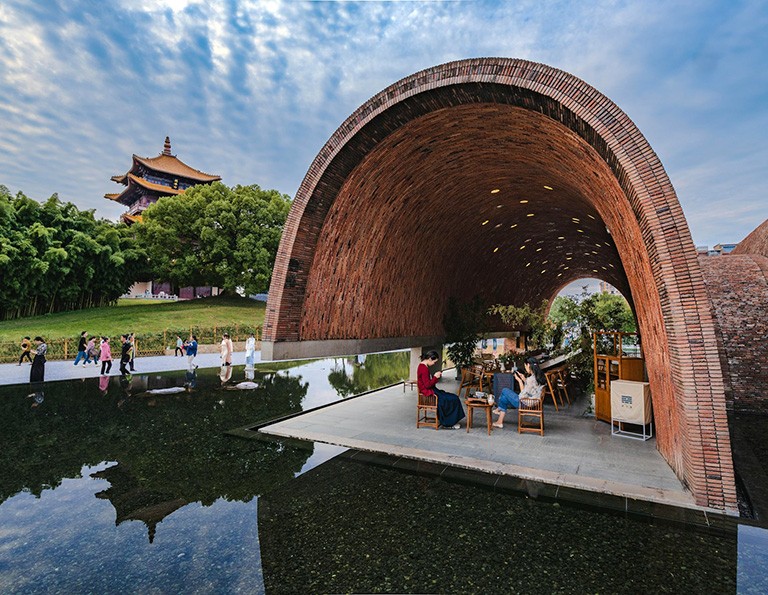
Hutian Kiln Site.
Planning Your Visit: A Practical Guide
Visiting the Hutian Kiln Site: A Practical Guide
Nestled in the picturesque landscape of Jingdezhen, the Hutian Ancient Kiln Site is a treasure trove for enthusiasts of Chinese history and porcelain craftsmanship. This site not only showcases the rich legacy of ancient ceramics but also offers a glimpse into the meticulous processes that have defined porcelain making for centuries.
Getting There
Location:
Hutian Village, Zhushan District, Jingdezhen City, Jiangxi Province, China, approximately 4 kilometers from the city center.
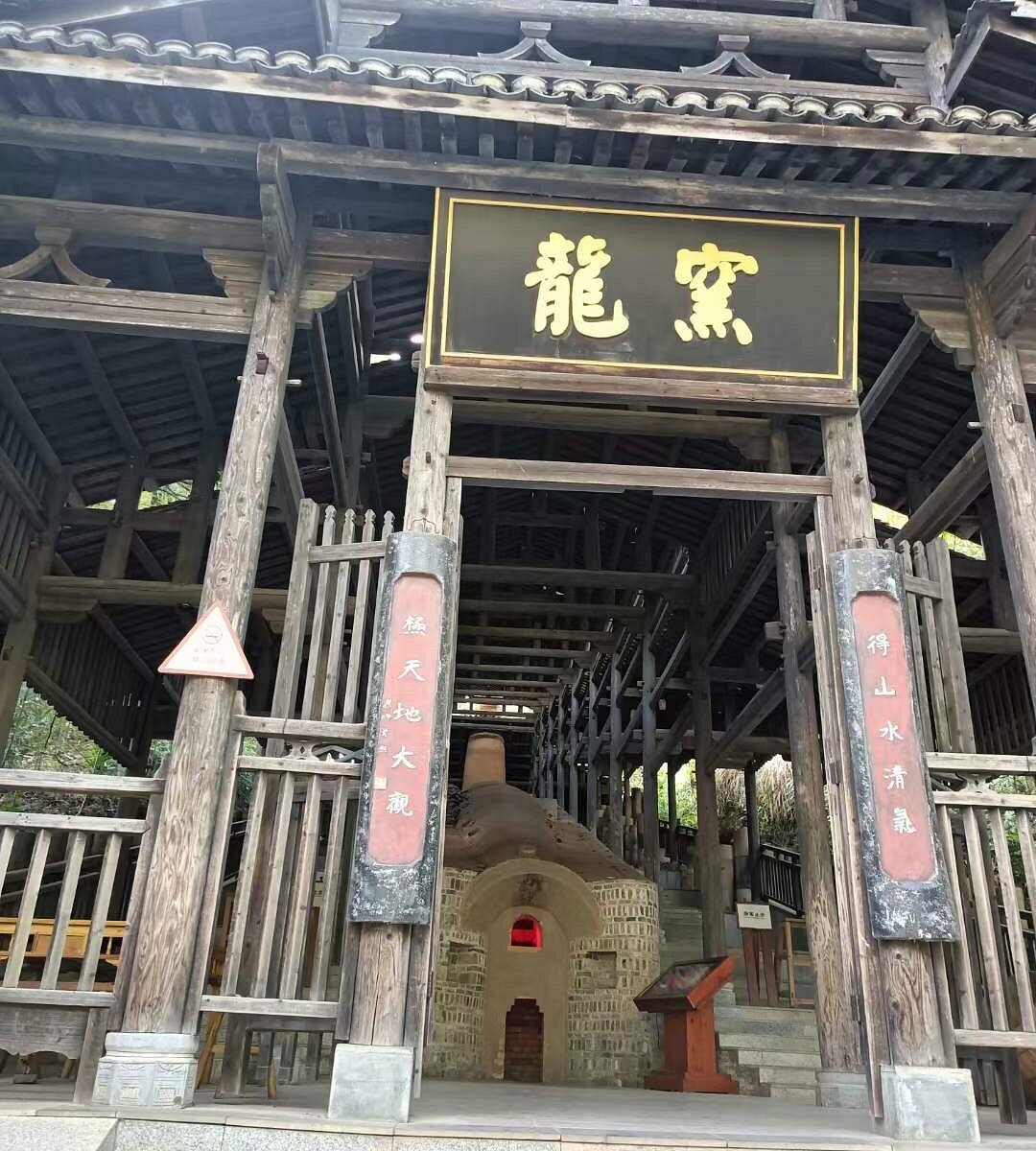
Hutian Kiln Site.
Transportation Options:
– By Bus: Take bus number 35 directly to the kiln site.
– Private Tours: Consider booking a guided tour for a hassle-free experience. Local tour operators can arrange transportation, dining, and a knowledgeable guide to enhance your visit.
Opening Hours and Admission
- Hours: Daily from 9:00 AM to 5:00 PM.
- Admission Fee: 40 RMB per person, providing access to the exhibition hall and preserved ancient sites.
Recommended Visit Duration
Allocate 1 to 2 hours for your visit. This timeframe allows you to explore the exhibition hall, view ancient relics, and appreciate the craftsmanship involved in creating porcelain.
Highlights of the Site
- Exhibition Hall: A must-visit feature, showcasing an array of porcelain artifacts unearthed from the site, including pieces from the Song, Yuan, and Ming Dynasties.
- Kiln Ruins: Witness the remnants of ancient kilns, where the history of porcelain production comes alive. The distribution model of the kiln site illustrates the extensive area that was once bustling with activity.
- Cultural Insight: Understand the evolution of porcelain making, from its inception during the Five Dynasties to its peak in the Song and Yuan Dynasties.
Tips for Your Visit
- Hire a Guide: For a deeper understanding of the cultural and historical significance of the site, consider hiring a local guide.
- Photography: Capture the intricate designs and the beauty of the ancient kilns, but be mindful of signage regarding photography restrictions.
- Nearby Attractions: Extend your visit to include other local sites such as the Jingdezhen Museum of Porcelain and the Yaoli Ancient Town for a broader cultural experience.
Visitor Amenities
- Facilities: Restrooms and basic amenities are available on-site.
- Souvenirs: Look for local shops nearby where you can purchase ceramics and pottery as lasting mementos of your visit.
Best Time to Visit
The Hutian Kiln Site is open year-round, making it a flexible addition to your travel itinerary. However, visiting during the spring or autumn months can enhance your experience with milder weather for exploring the outdoors.
Final Thoughts
The Hutian Ancient Kiln Site is more than just a historical location; it is a testament to the artistry and skill that defines Chinese porcelain. Whether you are a history buff, an art lover, or simply seeking to understand the cultural depth of China, this site promises an enriching experience that connects you to the country’s heritage. Enjoy your journey through time at this remarkable landmark!
Tickets: Prices, Booking, and Tips
Visiting the Hutian Kiln Site offers a unique opportunity to delve into the rich history of Chinese porcelain production, particularly during the Song and Yuan Dynasties. Here’s everything you need to know about ticketing, prices, and tips for your visit.
Ticket Information
- Admission Fee: 40 RMB per person
- Opening Hours: Daily from 9:00 AM to 5:00 PM
- Recommended Visit Duration: 1-2 hours
Booking Your Tickets
While tickets can typically be purchased on-site at the Hutian Kiln Site, it is advisable to check for any updates or special arrangements, especially during peak tourist seasons. For a more convenient experience, consider booking in advance through travel agencies that offer guided tours, which can often include ticket purchases as part of the package.
Tips for Your Visit
- Arrive Early: To fully immerse yourself in the experience and avoid crowds, aim to arrive just after opening.
- Guided Tours: Hiring a local guide can enrich your understanding of the site’s significance and the intricate porcelain-making techniques of ancient China.
- Transportation: If you’re traveling independently, you can take bus No. 35 to reach the Kiln Site easily. Alternatively, consider booking a private tour for a hassle-free experience.
- Nearby Attractions: Plan to explore additional nearby sites such as the Jingdezhen Ancient Kiln and Folk Customs Museum, Longzhu Pavilion, and Yaoli Ancient Town to make the most of your time in the area.
- Photography: Be sure to capture the stunning relics and the preserved ancient kilns, but remember to be respectful of any photography restrictions in place.
Essential Reminders
- Cash is King: While the entrance fee is relatively modest, it’s always a good idea to carry some local currency for small purchases or snacks.
- Dress Comfortably: Wear comfortable shoes as you will likely do a fair amount of walking while exploring the site and its surroundings.
- Cultural Etiquette: Be mindful of the cultural significance of the site and behave respectfully while visiting.
With these tips and information, you are well-equipped to enjoy your journey through the historical depths of the Hutian Kiln Site, a true testament to Jingdezhen’s legacy as the “Porcelain Capital” of China.
How to Get There: A Complete Transportation Guide
Navigating Your Way to the Hutian Kiln Site
Visiting the Hutian Ancient Kiln Site (湖田窑遗址) is a journey into China’s rich porcelain heritage, located in the scenic city of Jingdezhen, Jiangxi Province. With its historical significance as a major porcelain production center during the Song and Yuan Dynasties, this site is a must-see for history enthusiasts and cultural explorers alike. Here’s a comprehensive guide on how to reach this remarkable destination.
Getting to Jingdezhen
Before heading to the Hutian Kiln Site, you’ll first need to arrive in Jingdezhen. Here are the best ways to get to this charming city:
By Air
- Jingdezhen Luojia Airport (JDZ) serves domestic flights primarily from major cities like Beijing, Shanghai, and Guangzhou.
- Once you arrive at the airport, you can take a taxi or a pre-arranged shuttle to the city center, which is approximately 10 kilometers away.
By Train
- Jingdezhen is well-connected by rail, with frequent services from cities like Nanchang, Hangzhou, and Shanghai.
- The Jingdezhen Railway Station is located conveniently in the city. From the station, taxis and buses are readily available to take you to your next destination.
By Bus
- Long-distance buses are another option, with services from nearby cities such as Nanchang and Wuxi. The bus station in Jingdezhen is centrally located, making it easy to navigate to local attractions.
Reaching the Hutian Kiln Site
Once you’re in Jingdezhen, getting to the Hutian Ancient Kiln Site is straightforward. Here are your options:
By Public Transport
- Bus: Take Bus No. 35, which directly connects the city center to the Hutian Kiln Site. This is an economical option and takes approximately 20-30 minutes.
By Taxi
- Taxis are widely available in Jingdezhen. A ride from the city center to the Hutian Kiln Site will take around 10-15 minutes and will cost approximately 20-30 RMB, depending on traffic.
Private Tours
- For a hassle-free experience, consider booking a private tour that includes transportation to the Hutian Kiln Site. This option often comes with a knowledgeable guide who can enhance your understanding of the historical context.
Additional Tips for Your Visit
- Opening Hours: The Hutian Ancient Kiln Site is open daily from 09:00 AM to 05:00 PM.
- Admission Fee: Visiting the site requires an entry fee of 40 RMB.
- Recommended Duration: Plan to spend 1-2 hours exploring the kiln site and the accompanying exhibition hall, which showcases artifacts and educational displays related to ancient porcelain production.
Nearby Attractions
While in the area, consider visiting other notable sites in Jingdezhen, such as:
– Jingdezhen Ancient Kiln and Folk Customs Museum
– Fuliang Ancient City
– Sanbao International Porcelain Art Village
By following this transportation guide, you’ll be well-equipped to immerse yourself in the fascinating history and culture of porcelain making at the Hutian Ancient Kiln Site. Enjoy your journey through time!
Local Cuisine and Accommodation Nearby
As you explore the rich history of the Hutian Kiln Site in Jingdezhen, your journey will be enhanced by indulging in the local cuisine and finding comfortable accommodations nearby. Jingdezhen, famed as the “Porcelain Capital” of China, offers a delightful array of culinary experiences and lodging options that cater to every traveler’s needs.
Local Cuisine
1. Jingdezhen Clay Pot Rice (陶锅饭)
This traditional dish is a must-try when visiting Jingdezhen. Made with fragrant rice cooked in a clay pot, it is often accompanied by a variety of meats and vegetables, giving it a unique flavor that reflects the region’s culinary traditions. Look for local eateries that specialize in clay pot rice for an authentic experience.
2. Jiangxi Cuisine (江西菜)
Jiangxi cuisine is known for its bold flavors and varied ingredients. Expect dishes that feature fresh vegetables, local fish, and spicy condiments. Some popular dishes include:
– Stir-Fried River Shrimp (炒河虾): A lightly spiced dish showcasing the region’s fresh catch.
– Braised Pork with Brown Sauce (红烧肉): Tender pork belly cooked in a rich, savory sauce that melts in your mouth.
3. Tofu Dishes (豆腐菜)
Jiangxi is also renowned for its tofu, often prepared in a range of ways including stir-fried, steamed, or in soups. Be sure to try Mapo Tofu, a spicy and fragrant dish that packs a flavorful punch.
4. Local Snacks
Don’t miss out on street food! Sample Fried Rice Balls (炸米球) or Sweet Potato Cakes (地瓜饼) from local vendors as you stroll through the streets. These snacks provide a taste of home-style cooking and are perfect for a quick bite.
Accommodation Options
1. Jingdezhen International Hotel (景德镇国际酒店)
A comfortable stay awaits at this well-rated hotel, which combines modern amenities with traditional Chinese hospitality. Located conveniently near the city center, it offers easy access to the Hutian Kiln Site as well as other local attractions.
2. Jingdezhen Yihe Hotel (景德镇逸和酒店)
This hotel provides a blend of comfort and culture, featuring rooms decorated with local porcelain art. The onsite restaurant serves authentic Jiangxi cuisine, making it a great place to immerse yourself in local flavors after a day of exploration.
3. Ancient Kiln Boutique Inn (古窑精品客栈)
For those seeking a unique experience, this inn is themed around the ancient kilns of Jingdezhen. It offers cozy accommodations and is just a short walk from the Hutian Kiln Site, allowing you to easily dive into the local history.
4. Homestays in Hutian Village (湖田村民宿)
For a more intimate experience, consider staying at a homestay in Hutian Village. Local families often open their homes to travelers, providing a glimpse into daily life while serving homemade meals that showcase local flavors.
Conclusion
Your visit to the Hutian Kiln Site will not only enrich your understanding of ancient porcelain-making traditions but also introduce you to the vibrant culinary scene and welcoming accommodations of Jingdezhen. Whether you savor local dishes or relax in a comfortable hotel, these experiences will undoubtedly enhance your cultural journey through this historic city.
Frequently Asked Questions
Frequently Asked Questions about Hutian Kiln Site
1. What is the Hutian Kiln Site known for?
The Hutian Kiln Site is renowned as one of the largest and most significant ancient porcelain production sites in China, particularly during the Song and Yuan Dynasties. It showcases the traditional methods of porcelain making and features well-preserved kilns and artifacts that illuminate the rich history of Chinese ceramic production.
2. Where is the Hutian Kiln Site located?
The Hutian Kiln Site is situated in Hutian Village, approximately 4 kilometers southeast of the city center of Jingdezhen, Jiangxi Province, China. This location is easily accessible for travelers seeking to explore the historical significance of this ancient site.
3. What are the opening hours and admission fees?
The Hutian Kiln Site is open daily from 9:00 AM to 5:00 PM. The admission fee is 40 RMB, making it an affordable destination for history enthusiasts and cultural travelers alike.
4. How long should I plan to visit?
A visit to the Hutian Kiln Site typically takes 1 to 2 hours. This allows ample time to explore the exhibition hall, observe the ancient kilns, and gain insight into the traditional porcelain-making process.
5. What can I see at the Hutian Kiln Site?
Visitors can explore the Exhibition Hall, which features a variety of porcelain artifacts unearthed from the site. Additionally, the kilns and workshops from the Song, Yuan, and Ming Dynasties are well-preserved, providing a glimpse into the historical context of porcelain production.
6. Is it advisable to hire a guide?
While the site is accessible to independent travelers, hiring a local guide is highly recommended. A knowledgeable guide can offer deeper insights into the cultural and historical significance of the artifacts and the porcelain-making process, enhancing your overall experience.
7. What nearby attractions should I consider visiting?
In addition to the Hutian Kiln Site, travelers may enjoy visiting nearby attractions such as:
– Yaoli Ancient Town
– Fuliang Ancient City
– Jingdezhen Ancient Kiln and Folk Customs Museum
– Longzhu Pavilion
– Jingdezhen Museum of Porcelain
8. What is the best time to visit the Hutian Kiln Site?
The Hutian Kiln Site is a year-round destination. However, visiting during the spring (March to May) or autumn (September to November) is ideal, as the weather is typically mild and pleasant, making your exploration more enjoyable.
Final Thoughts on Your Trip
As you conclude your exploration of the Hutian Kiln Site, you will undoubtedly leave with a deeper appreciation for the rich heritage of Chinese porcelain and the artistry that has flourished in Jingdezhen for centuries. This remarkable site is not just a window into the past; it is a testament to the enduring legacy of craftsmanship and cultural significance that defines this region.
Reflecting on Your Experience:
-
Historical Significance: The Hutian Kiln Site serves as a reminder of the pivotal role Jingdezhen played in the history of porcelain production. The ancient kilns that have stood the test of time are a profound connection to the artisans of the Song, Yuan, and Ming dynasties.
-
Artistry and Craftsmanship: Witnessing the remnants of ancient workshops and the exquisite porcelain artifacts displayed in the exhibition hall inspires admiration for the meticulous techniques and artistic vision of those who came before.
-
Cultural Immersion: Engaging with the site allows you to step back into a world where porcelain was not merely a commodity but a symbol of status, beauty, and cultural pride.
-
A Journey of Discovery: Whether you are a pottery enthusiast or a history buff, the Hutian Kiln Site offers an enriching experience that caters to a variety of interests, making it a must-visit destination in China.
As you prepare to leave, take a moment to reflect on the stories encapsulated in the delicate porcelain and the ancient kilns. Your visit to the Hutian Kiln Site is more than just an exploration of a historical site; it is an invitation to connect with Chinese culture and history in a profoundly meaningful way.
Final Reminders:
- Plan Your Visit: Allocate 1-2 hours to fully appreciate the site and consider hiring a local guide for in-depth insights.
- Capture the Memories: Don’t forget to take photographs of the stunning artifacts and the picturesque surroundings of Hutian Village.
In closing, the Hutian Ancient Kiln Site stands as a bridge between past and present, a place where the beauty of porcelain continues to inspire. May your journey through Jingdezhen and its storied kilns remain with you long after you depart, igniting a passion for the intricate art of Chinese porcelain that is as timeless as the pieces themselves. Safe travels!